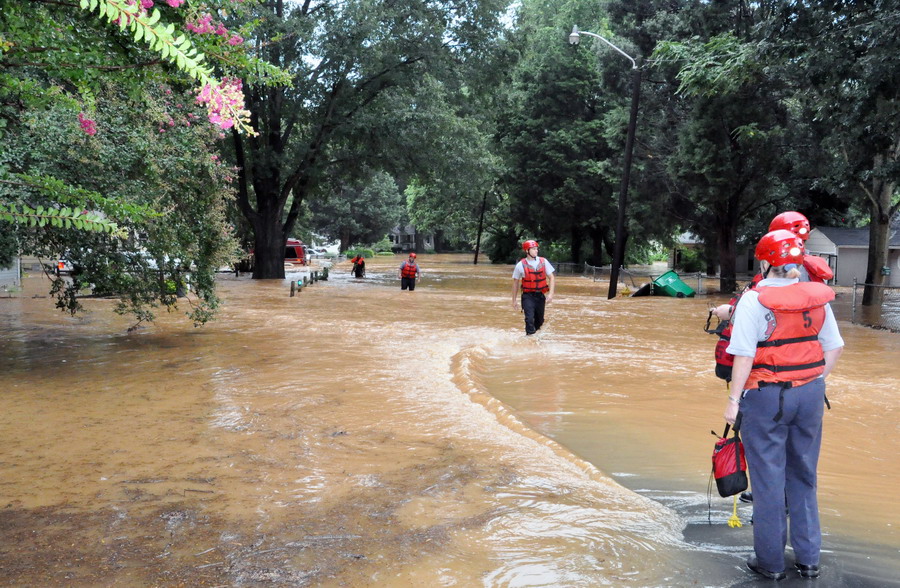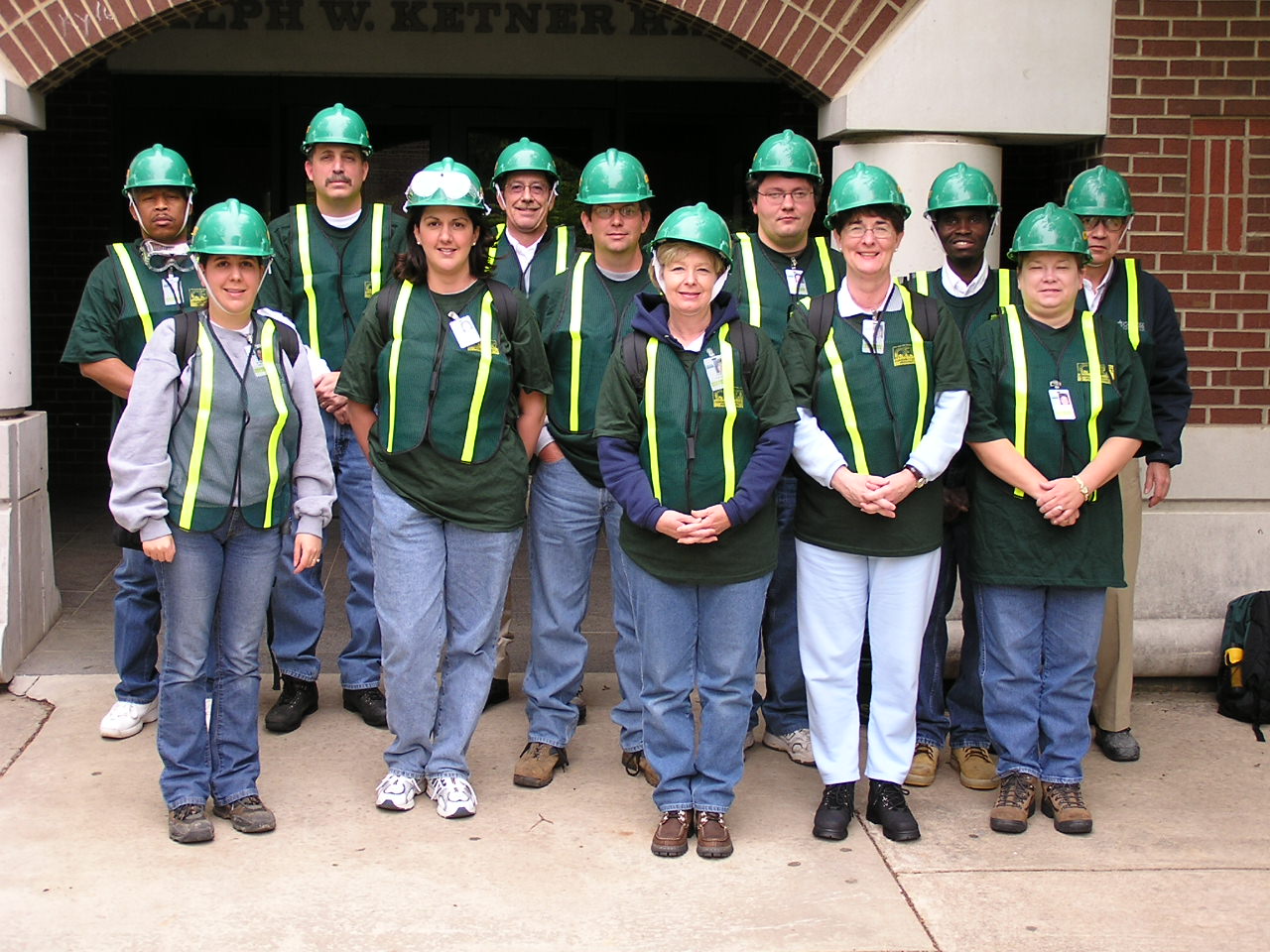Hazard mitigation is preventive action taken to lessen or eliminate the impacts of hazards. Hazards include natural disasters, such as flooding and ice storms, and may also include some manmade disasters, such as explosions or hazardous materials spills. Impacts from these hazards include inconvenience, injury, loss of life, economic and transportation disruption, damage to the environment, and property damage.
Why is this important to your community?
The CONNECT region faces threats from natural disasters, including hurricanes, flooding, tornadoes, ice storms, and wildfires. Additionally, increased population growth has led to more manmade events, such as hazardous materials leaks or spills, train derailments, etc. Given the rise in extreme weather events across the country and the increase in population and traffic, planning for “mitigating” –avoiding or lessoning the impact of—these events has become increasingly important for communities. The Disaster Mitigation Act of 2000 (DMA2K) makes mitigation plans for state and local governments a requirement to become eligible for funding through the Federal Emergency Management Agency (FEMA) Hazard Mitigation Grant Program (HMGP) and other pre- and post-disaster mitigation funding. Therefore hazard mitigation planning is an ongoing effort of counties and municipal governments in North and South Carolina, working with FEMA and respective state emergency management offices. Creative thinking about hazard mitigation planning also can improve the process, to further reduce our vulnerability to disasters, minimize the potential risk of personal injury and property damage, save our taxpayers money, and speed recovery after a disaster. Enhanced hazard mitigation planning also provides ongoing benefits that are unrelated to disasters at the same time, including enhanced collaboration across jurisdictions not only in time of disaster, but also on other issues.
Where is it appropriate to use?
What priorities does it address?
What other tools are related?
- Creative Public Finance
How does it work?
The hazard mitigation planning process is predominantly publicly driven with support and guidance from local and state government, and can be effectively integrated within a community’s comprehensive or master planning processes. Hazard mitigation is more closely related to land use, infrastructure and facilities, and services planning than people often realize. Broadening the reach of hazard mitigation planning to influence other planning decisions and capital improvement projects is essential to increase the resiliency of our communities and potentially reduce overall infrastructure replacement costs. Currently, hazard mitigation and resilience planning processes tend to feature:
- County-level planning that includes all local governments within the county, or multiple but coordinated plans within a county
- Increased emphasis on regional or multi-county plans
- Representation of all planning and infrastructure and human service provision departments in the planning area
- Public representation, including health care providers, business owners, and others
- Public safety and emergency services leadership
Planning focuses on not only immediate response to events, but also actions that can be taken before, during, and after to either avoid the event, or to minimize its impact. The inclusion of more voices concerned with activities such as code enforcement or development and infrastructure has increased the focus on preventive activities, where possible, and more comprehensive mitigation strategies.
This is because so many actions that mitigate hazards, such as protecting natural drainage systems during development or adopting commercial maintenance codes also support the environment, economic vitality, and park access. The key to making hazard mitigation planning work, however, is the implementation of recommended actions, and ongoing communication among participants in the planning process at intervals between the five-year required updates.
Ready to get started?
Using the Tool
- Develop a cross-departmental, cross-jurisdictional (within a county or group of counties) work group that meets at least once a year to assess and provide recommendations for community-wide planning issues related to hazard mitigation and resilience. Using questions such as “What and where are potential weaknesses that could become hazards? What plans for mitigation are in place? What are gaps?”, look at:
- The extent to which recommendations included in the last adopted hazard mitigation plan have been adopted and implemented
- The past year’s “hazards history,” in terms of what happened and what was the impact of mitigation strategies, and how they can be improved
- The structural health and potential hazards associated with the community’s “grey” infrastructure (roads, bridges, rail, water, sewer, electric, gas, cable facilities) and “green” infrastructure (waterways, floodplains, wetlands, forestlands, steep slopes)
- The conditions of and access to hospitals, schools, community facilities, and other at-risk locations such as nursing homes and day cares
- How additional proactive strategies can be built into existing community plans and policy documents such as future land use plans, zoning and stream buffer regulations, floodplain regulations, building codes, and emergency services standard operating procedures.
- Support the CONNECT region (Centralina and Catawba COGs) in designing workshops that are specifically tailored to local needs. The regional workshops should highlight local success stories and communicate best practices (e.g., combatting extreme weather, using commercial maintenance codes and floodplain regulations for proactive hazard mitigation, etc.).
- Work with local government staffs and policy-makers to ensure that hazard mitigation planning recommendations, where they intersect with other adopted plans such as comprehensive plans, are both included and consistent.
- Encourage county and municipal staff participation in hazard mitigation workshops and coordination with surrounding municipalities in hazard mitigation and resilience planning—and include not only public safety or emergency management staff, but planning, public works, transportation, and human service department staff members..
- Provide policy support for community-wide hazard mitigation planning and integration within all department efforts, including building codes, capital improvement planning, etc.
- Include the public in the planning process, and when adopted, let the public know what you are doing to protect them. Continue to get their ideas between plan updates, so that changing conditions are accounted for, and potentially controversial measures such as changes to development regulations or other code changes are understood in light of hazard protection, greenway development, etc. as well as good planning.
Partners
- Community Development Organizations
- Elected Officials
- Farmers / Agricultural Extension Office
- Health and Wellness Programs
- Health Care Providers
- Landscape Architects, Planners, and Urban Designers
- Land Trust
- Local Food Councils
- MPOs, RPOs, and COGs
Where has it worked?
The Disaster Preparedness and Planning Project (DP3) - Baltimore, MD
About the Program
Given Baltimore’s vulnerability to the impacts of severe hazard events, the city is taking a comprehensive, progressive approach to the hazard mitigation planning process. Baltimore is making a concerted effort to address existing hazards while simultaneously preparing for predicted hazards due to climate change. This initiative integrates hazard mitigation planning, floodplain mapping, and climate adaptation planning. It also includes research, outreach, and citywide actions to create a comprehensive, new risk-preparedness system for addressing existing and future impacts. Through citywide coordination, the program is ensuring that adaptation recommendations are included in future capital and operating budget decision making and prioritized within other planning processes and integrated with regulations.
Why it works
The DP3 project includes an Advisory Committee of experts that draws from the city and state to help gather relevant data and coordinate between agencies. By expanding the scope of hazard mitigation planning, participants in the process were able to incorporate topics that are not included in the typical hazard mitigation plan, for example hazards related to air quality and infectious disease. The team expanded public outreach by holding meetings focused on flooding and heat stress, ultimately allowing them better focus on vulnerable communities. The plan’s findings are incorporated into other planning efforts and utilized in capital improvement planning.
Charlotte Mecklenburg Multi-Jurisdictional Hazard Mitigation Plan - Mecklenburg County, NC
 Image Source: Charlotte Fire Department. Source License: CC BY 2.0.
Image Source: Charlotte Fire Department. Source License: CC BY 2.0.
Contact
Jeff Dulin, Emergency Management Director
704-336-2412
CharMeckEM@charlottenc.govAbout the Program
The Charlotte Mecklenburg Multi-Jurisdictional Hazard Mitigation Plan, first drafted and approved by FEMA in 2005, covers the City of Charlotte, Mecklenburg County, and incorporated cities and towns of Mathews, Mint Hill, Pineville, Huntersville, Davidson, and Cornelius. The plan follows the requirements in the federal Disaster Mitigation Act of 2000 and is updated every five years. The most recent iteration of the plan will be completed in 2015. Completion of the plan makes the included jurisdictions eligible to receive disaster assistance funds. The plan includes background on hazard planning, an explanation of the planning process and public engagement, a community profile for each of the participating municipalities, identification of hazards and analysis of risk, a capability assessment, a mitigation strategy and action plan, and maintenance procedures for updating the plan. Some of the major risks to the area encompassed within the plan include flooding, hurricanes and tropical storms, severe thunderstorms, tornadoes, winter storms, earthquakes, landslides, sinkholes, drought, wildfire, and dam/levee failure.
Why it works
Updating the plan every five years ensures that the public is made aware of important information regarding disaster preparedness and stays engaged in the process of developing strategies and plans for mitigating hazards from disasters. In addition to informing and engaging the public, the plan also ensures that communities are proactively mitigating the potential for disaster by providing a number of appreciable strategies and actions. The mitigation strategy filters potential mitigation strategies into three categories: high priority, moderate priority, and low priority. The mitigation action plan categorizes potential actions for each strategy by priority focusing on comparing the likelihood of a certain event (e.g., is there a limited, moderate, or high risk of a particular disaster occurring) and the region’s capability to complete the particular action (e.g., does the municipality have a high, moderate, or limited capability to complete the action).
Rowan County Multi-Jurisdictional Hazard Mitigation Plan - Rowan County, NC
About the Program
Rowan County updated their Multi-Jurisdictional Hazard Mitigation Plan in 2010 in accordance with regulations in the federal Disaster Mitigation Act of 2000 to cover the local jurisdictions of China Grove, Cleveland, East Spencer, Faith, Granite Quarry, Kannapolis, Landis, Rockwell, Salisbury, and Spencer. As part of the county’s commitment to comprehensive disaster preparedness and mitigation, the plan has been integrated into the Rowan County Emergency Operations Plan (EOP) and there are plans to integrate it into other future plans. The plan focuses on the most common disasters that Rowan County has faced including hurricanes, tornadoes, severe winter storms, high winds, freezing temperatures, chemical spills, and flooding. Strategies, goals, and action plans specific for each type of hazard and municipality are included within the plan as well as a list of mitigation strategies already in place.
Why it works
The plan details mitigation goals and action plan priorities by the likelihood of certain events occurring within the county and the ability of the county to complete the action. The mitigation goals and action plan also includes project scope, partners, and implementation strategies. In addition to the plan and subsequent five year updates, the county has taken a proactive approach to disaster preparedness through the creation the ReadyROWAN program. The program ensures that families are prepared for emergency and disaster situations by connecting families to resources that help them make a plan, build an emergency kit, and be involved by participating in Rowan County Community Emergency Response Teams (CERT). CERT helps citizen volunteers prepare for emergency response through training and preplanning.
- Elected Officials




